(Please email me to get a password to view this video. It will be public in March after the MIT Media Labcast release.)
WaaZam is the primary project in my PhD research at the MIT Media Lab. Current video communication systems are not designed well to support co-creative activities at a distance. WaaZam is a system that tracks and composites users and objects from separate physical locations with digital media in the same environment. The platform supports collaborative creation of the environment during live sessions. Here is the The intro to the video we submitted to CHI that explains the system and demonstrates many possible usage scenarios. I am keeping this private for now, but please email or check if I sent you a password until April.
Here is our development work over the summer on the WaaZam system, previously called TeleKinect. Built in collaboration with Anette Von Kapri who used the platform to build ReachIn.
User studies of parents and children in the lab as well as a classroom in Hartford Conn. This video is private because there are a number of children in it. If you are interested in seeing it, please email me for the password.
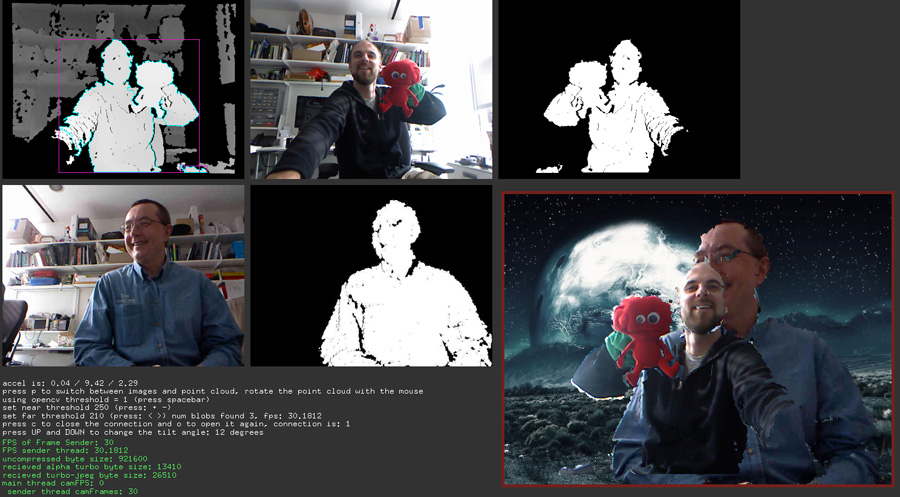
WaaZam began with experiments in digital puppetry (see VisionPlay). I wanted to build a system that allowed people to play at a distance with each other with objects and their bodies. Here is a screenshot of the first code hackup in 2011 that marked the beggging of the project. It felt great to interact in the space with the other person, no matter how good the segementation and compositing were.
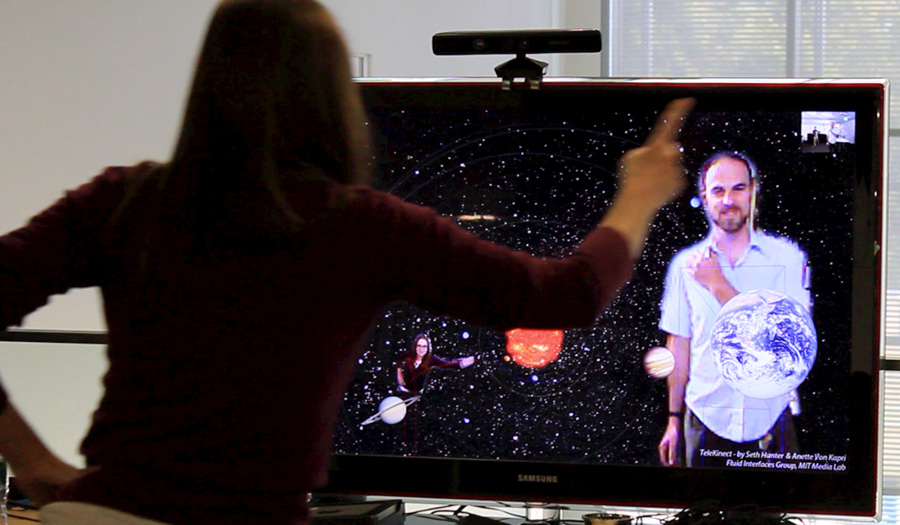
I worked with a team of UROPs over the summer to improve the technical components of the system and design a scene rending system demonstrated in the video above.
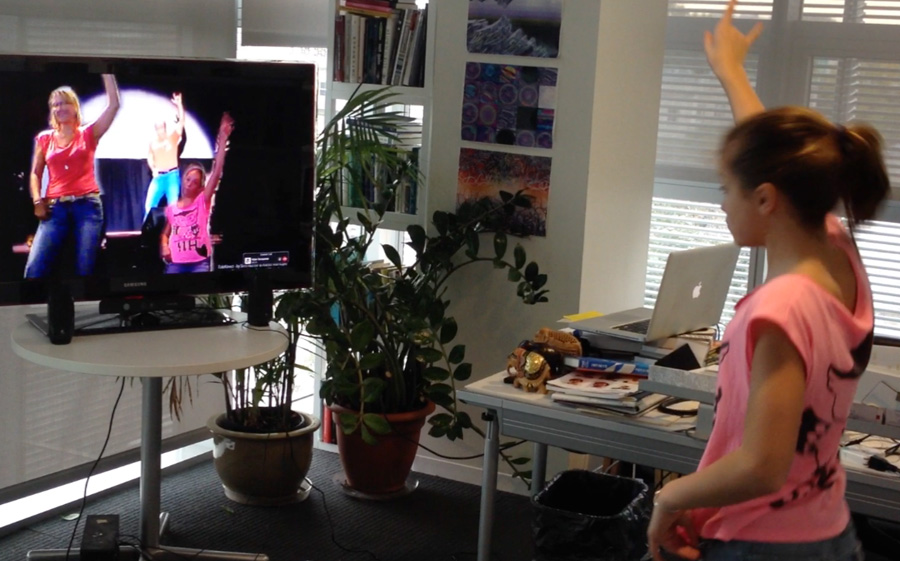
We tested the system in a User Study with 12 parents and children and got inital feedback on the scenarios that were compelling, technical features, and social dynamics.
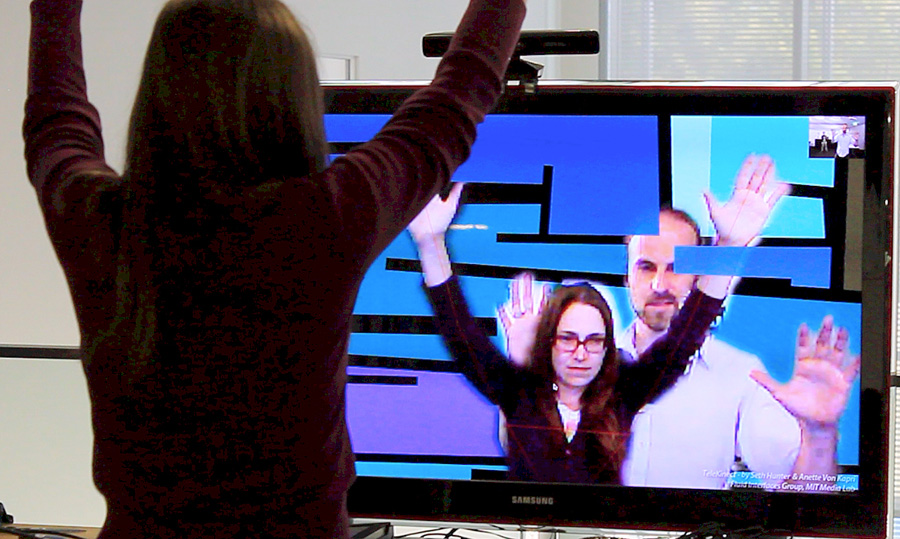
The scene renderer allows you to create your own layered compositions and navigate them by moving forward towards the TV and away again with others.
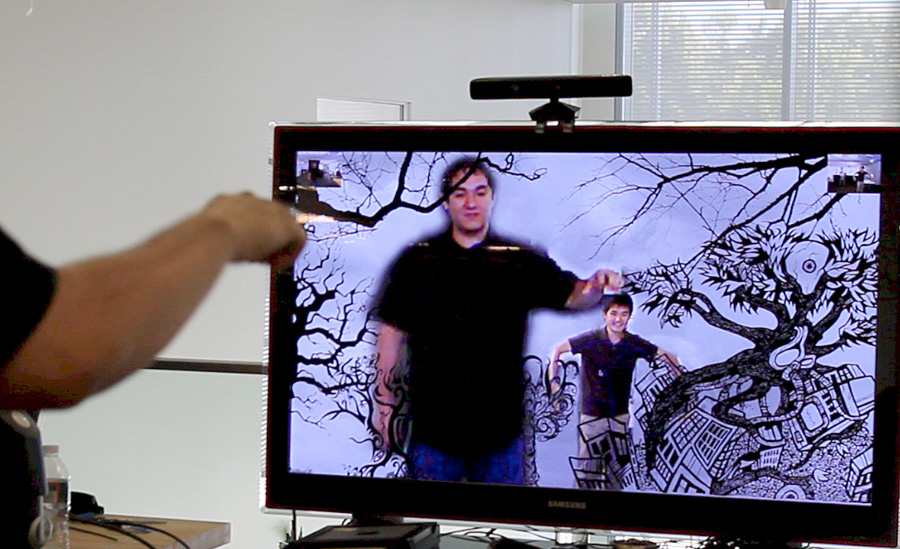
We also built in the ability to scale and translate the position of others in the environment, a tribute to Myron Kruger.
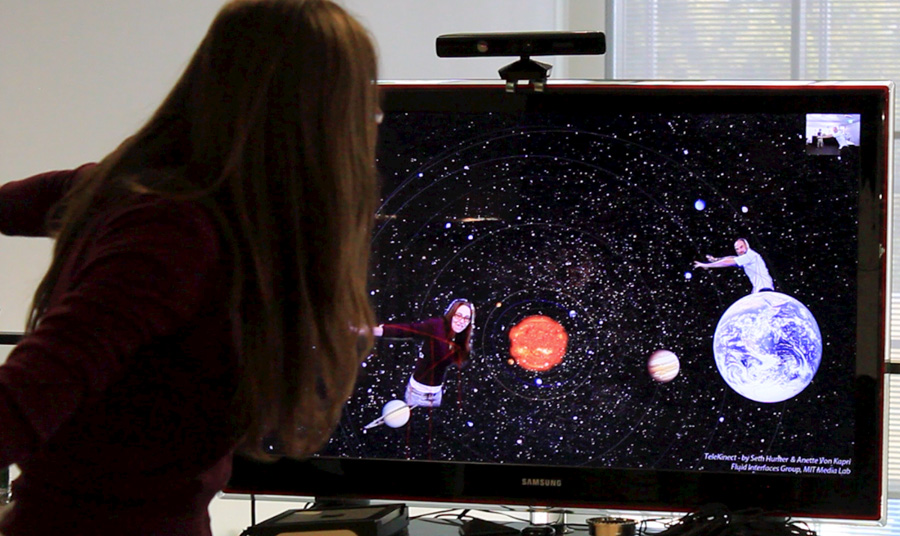
We are working on using gestures to allow you to move around the environment for fun but also for animation and demonstration purposes.